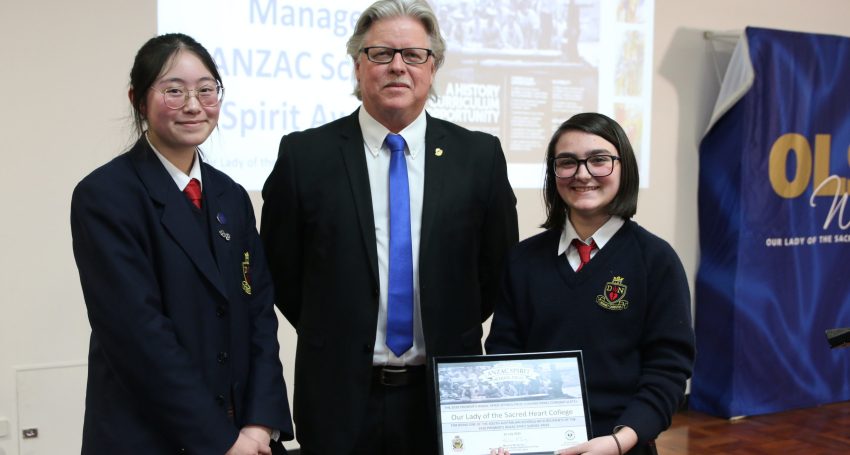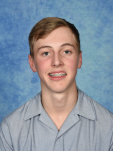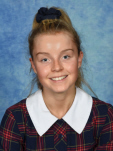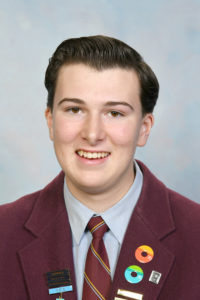Capturing the Anzac spirit
Schools
The amazing Anzac spirit shown by men and women who fought for their country has provided the inspiration for award-winning essays written by five Catholic school students.

Mia Tsimouris and Lara (Bich-Loan) Nguyen from Our Lady of the Sacred Heart College, Oscar Rice and Immogen Pertini from St Ignatius’ College, and Callum Barrott-Walsh from Cardijn College are among the 16 recipients of this year’s Premier’s Anzac Spirit Prize.
Run by the State Government, the competition gives students in Year 9 and 10 the opportunity to research and reflect on the remarkable sacrifices of South Australian service men and women during the 20th century.
Advertisement
Using a range of research resources, the students are asked to write an essay comprising 1000 words on the background of their subject and 500 words on how the men and women embodied characteristics – such as courage, perseverance, mateship and resourcefulness – of the Anzac spirit.
Initially, this year’s winners were scheduled to take part in a 12-day trip to France to visit war memorials and significant sites, however due to COVID-19 restrictions they will now participate in a tour to Canberra and Darwin in the 2021 April school holidays.
Year 10 student Mia said she had enjoyed researching Major Patrick Howard Auld, who served in both World Wars.
“In World War I he fought in Gallipoli, Pozieres and the Somme. He was wounded but remained in action, for which he was awarded a Military Cross,” she said.
“In Noreuil, France he received a gunshot wound to his left buttocks and had to be in hospital for nine months to recover. After re-joining his battalion, he fought in the battle of Villers-Bretonneux and was recorded as missing in action, and later a prisoner of war in Germany. He was repatriated after the Armistice.
“Overall I found it amazing how much information I managed to find out about him and his life, especially considering he was just one person and millions of people fought in the World Wars.”
Lara said through her essay on Dr John Yeatman she had improved her “research abilities”, as well as overcoming “challenging obstacles”.
“Dr Yeatman was not a famous figure hence why there was not much information about him online,” she said. “However, with the guidance and support from my teacher, my entry was successful.”
For his essay, Oscar researched Dr John David Rice who was a medical officer stationed at Tobruk and later in Papua New Guinea between 1940 and 1945.

Oscar Rice
“As a doctor, John showed selflessness when looking after wounded or sick patients. He combined his knowledge of caring for soldiers and showing compassion even when outside his aid post,” Oscar wrote.
“John’s selflessness and work for others was also seen outside of the war in his work with the wider community, whether in a remote town in Western Australia, or in the city of Adelaide.
“He helped out a great deal in the local Catholic Church, advising clergy and helping progress services in in the community, including the Calvary Hospital and the development of the Lyell McEwin Hospital. He delivered thousands of babies whilst working as a family GP, cared for countless local patients and still managed to find time for his family, including his 14 grandchildren.
“He was devoted to serving his community and country.”

Immogen Pertini
Immogen researched her great grandfather Gordon Roy Colquist, who at 18 years of age enlisted in the air force, leaving behind his job at Penfolds winery.
After his training as an aircraft mechanic, he was sent to Liverpool and shortly after was stationed in Sierra Leone in Africa with the 452 squadron. By July 1941 Gordon’s squadron had encamped to Kirton in Lindsey where he repaired super-marine spitfires so that the pilots could conduct regular defensive patrols over the English Channel.
Advertisement
During its first year of operations the squadron established itself as one of the most successful in Fighter Command, destroying 62 enemy aircrafts and damaging another 17. They also ravaged a German destroyer with a strafing attack mounted during the ‘dash’, through the English Channel on February 11 1942.
After his war service Gordon returned to Penfolds, transferring into the laboratory to test red wines and helping to refine the award-winning Grange.
“After the success of the Penfolds Grange, Gordon continued to work in the vintage cellar up until he retired in 1988, exactly 50 years to the day he started,” Immogen wrote.

Callum Barrott-Walsh
For his winning essay Callum researched Joseph Stanley (Stan) Verco, learning about his work in the medical field both during and after the war.
“As my brother with Down Syndrome is often receiving medical treatment, I was intrigued by Stan’s connection to our hospital system in this State and how he learned from his time in the war about the usefulness of certain medical technology,” Callum said.
“I also loved learning and writing about how courageous Stan was and his willingness to join the Australian Army Medical Corps at such a young age to volunteer his time to help others in the tremendous world wars.
“I was amazed that Stan was awarded a Service Star, British Empire war medal and Victory Medal for his service to others.”
Callum added he felt “very honoured” to have been selected as one of the winners for the trip to Canberra and Darwin as “I love history and know that this trip will teach me so much about the ANZAC values our soldiers held”.
“I am also passionate about learning more about the Indigenous culture in Darwin as I feel it is important to learn about history in our own nation. I believe events of the past can unite us all in the future and can make us all better people who are more just to everybody.”








Comments
Show comments Hide comments